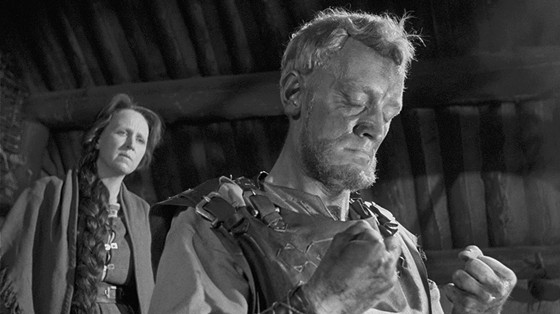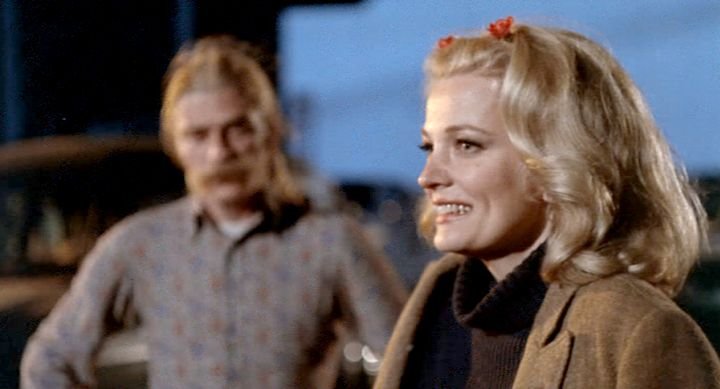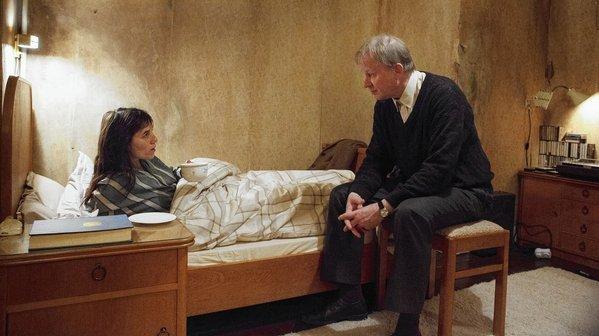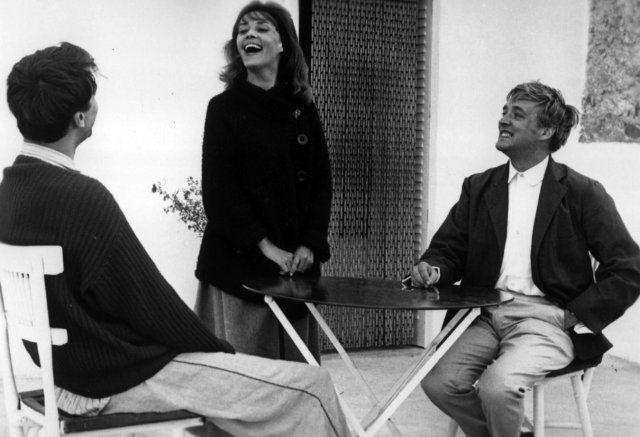6. L’Eclisse (1962)

Michelangelo Antonioni made an unconnected trilogy about isolation, ennui, and lost romances in modernizing Italy in the early 1960s. The last of these films starred Alain Delon and his muse, Monica Vitti as lovers who just never really connected.
Delon plays a greedy and ambitious stockbroker, trying to advance the social ladder at any cost. Vitti plays a translator going through a recent breakup who is searching for a true romance. The paths are aligned for these two characters, but in typical Antonioni fashion, the spark is never really there, despite them convincing themselves there is.
There are moments in the film that support the connection of the disconnection between these characters and passengers, particularly people compositely painted in the frame or glancing by. It all leads to the fateful ‘ellipse’ at the end of the film. Both characters make a choice that they are going to meet up, but their choices don’t led to that conclusion. It exemplifies everything Antonioni was trying to say because the two characters acted as they were in an intense love affair, but never wanted to fulfill it completely because they were missing something.
Were they just too lonely to be alone? Did they need someone to fill an existential gap in their lives? Can’t they relate to anyone or anything around them? Delon and Vitti are note perfection because they allow the audience to fill what their characters are thinking and we just don’t really know at points. With the work of Gianni Di Venanzo’s cinematography and Antonioni finalizing his thoughts on relationships in the modern world, we get two complicated human beings.
7. The Virgin Spring (1960)

Ingmar Bergman’s films always feature characters with intense feelings on the forefront and with buried emotions. In his film here, Max von Sydow plays a man of devoted faith who questions whether to take acts of violence after his daughter’s rape. This struggle that von Sydow goes through in Bergman’s horror-like fable shows how a person will go against everything they believe in to satisfying an inner turmoil.
Von Sydow struggles with committing a so-called pagan act of violence to his Christian ideologies. Therefore, will his external actions and choices go against what is internalized in him? For example, there is a scene where he tries to take a tree out of its roots. For all the symbolism involved and beautifully shot by Sven Nykvist, it represents what is going on the mind of von Sydow. He is completely tormented and doesn’t know how to act after the rape of his daughter.
If we put ourselves in his shoes, what would we do? After he decides to pursue his humanistic and fatherly calling, we see how complicated of a man he is. He feels like he will always be lost, but even if he didn’t go ahead with his views, he still would have been immensely complicated. Sometimes a situation as drastic of this one can reveal the true intentions of ourselves, no matter what the cost.
8. Minnie and Moskowitz (1971)

Take one of the very first scenes where we see Seymour Cassel’s Moskowitz at a diner asking for a coffee and a beer. The two beverages are completely contradictory to one another as one brings you up and the other one down. Well, that’s the story of Moskowitz and Gena Rowlands’ Minnie’s relationship through the film.
Minnie has sworn herself off from love as Moskowitz desperately wants to be with her. In the films of John Cassavetes, you never know what to expect from the characters. However, you do know that they will try, fail, and succeed in a range of emotions to love one another.
Take the scene where Moskowitz meets Minnie’s parents and she is embarrassed by his wardrobe. If he truly loved her, would he have changed his style to fit the situation? Or was he just trying to be the most true version of himself? Take Minnie, for example: if she has sworn herself off from love, why does she allow her old, cheating lover back into her apartment? Maybe there’s a glimmer of hope to rekindle the relationship.
Regulars Cassel and Rowlands are literally all over the place as Cassel jumps in and out of parking lots or Rowlands trying to contain the hysterics of a man she agrees to see on a lunch date. Cassavetes never stays away from characters that are complicated and here so more than ever, as they look for meaning in a true relationship.
9. Nymphomaniac (2013)

Lars von Trier has never shied away from controversy or films that are explicit, deranged, or daring. The way he makes his choices stick with the viewer during and after the film is through his characters. A vast majority of representation on the complicated and contradictory nature of human beings is on full display through Joe, played by Stacy Martin and Charlotte Gainsbourg.
Joe is a nymphomaniac and has had almost every sexual encounter you can think of: random acts on a train, sadomasochism, false testimony, and the list goes on and on. Why does she do this? She attempts to explain to Seligman, played by Stellan Skarsgard, another person with an interesting background, but we can’t really pinpoint it down by the end of film. She constantly tries to diagnosis herself through the film while engaging in intense, sexual acts. Is she suffering, delusional, addicted? Yes, she is all of the above, but it still doesn’t explain the true search or answers by her actions.
Even all the people she meets care or take advantage of her. Seligman, Shia LaBeouf’s Jerome Morris, or Jaime Bell’s K try to help her but by giving into her sexual nature. They can’t diffuse the differences of being a nymphomaniac either. Martin and Gainsbourg’s Joe shows how a human being can try to cure oneself by diving deeper into the action of what they are trying to cure.
10. Jules and Jim (1962)

A relationship between two men and one woman – how can this not end in tragedy? Based off of Henri-Pierre Roche’s novel and energetically adapted by Francois Truffaut, we explore the dynamic relationship amongst Jeanne Moreau, Oskar Werner, and Henri Serre as young lovers during World War I.
Throughout the film, we start to see the different relationship that Catherine has to Jules and Jim. Every emotion is played out in the truest form between the actors. However, the question is raised to Catherine – do human beings need to go through every emotion in order to live their fullest life? Does Catherine need to satisfy herself from two men in order to do this? Or can Jules or Jim not give everything so they need an external partner to satisfy their needs? A huge amount of questions come up about why they engage in this, at first a fun but then tormented affair.
Truffaut lets certain scenes plays out, such as how Catherine seeks refuge from Jim as she goes to Jules, or the end scene on why she committed that action. Regardless, a relationship among three people will allow almost nothing to be hidden and when it does, it can cause great damaging effects. Maybe we as human beings are just too complicated to comprehend why we do what we do.